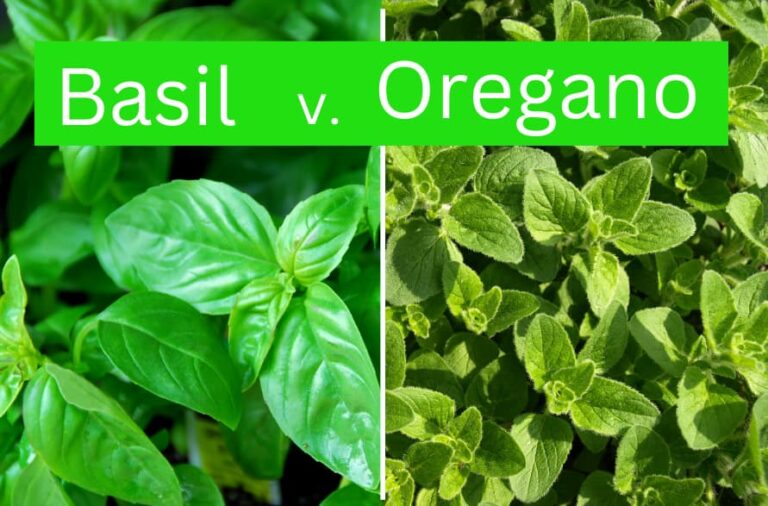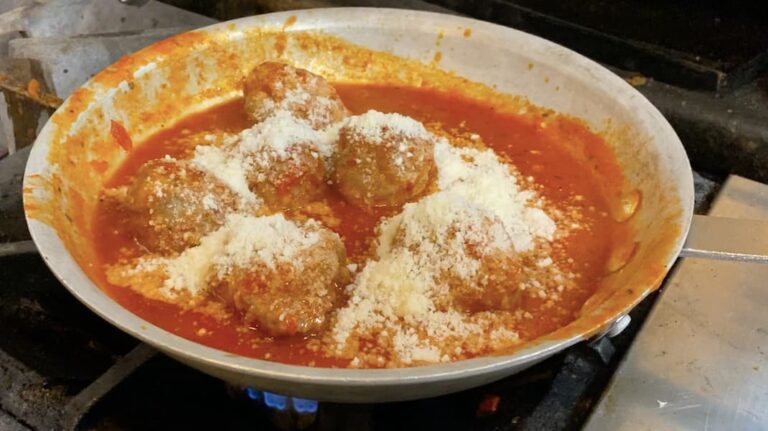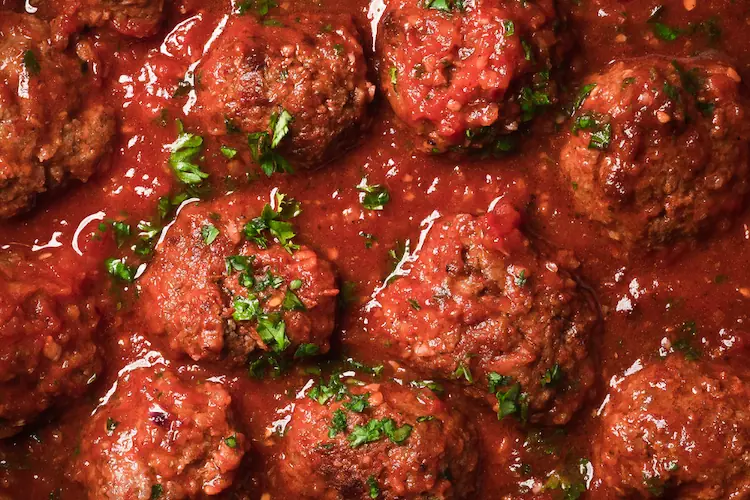Basil and oregano… Oregano and basil. When you’re cooking Italian food, you really can’t escape these herbs. And if you’re going to be using them, you might as well know what they are all about. Let’s learn a few things about them.
In the summer I always keep a big, bushy basil plant in a pot right outside my back door. There’s nothing like the sweet smell of fresh basil.
I also keep a bouquet of dried oregano in my kitchen at all times. A few shakes on a salad or homemade pizza is like transporting yourself to a warm village on the Mediterranean coast.
When I’m working in the kitchen, either at home or at Mortadella Head, I love using different herbs. But, since I spend most of my time making Italian dishes, there are a couple of herbs that I’m very familiar with.
I’m talking about basil and oregano. In Italian cuisine, basil and oregano are probably the most popular herbs that you come across.
Fresh herbs and dried herbs are both very important in an Italian kitchen. Basil and oregano have many culinary uses when it comes to Italian food, both fresh and dried.
In this article, I am going to give a detailed comparison of basil and oregano. This information should come in handy whether you have a kitchen garden bursting at the seams with fresh herb plants or you buy yours at grocery stores and supermarkets.
About Basil
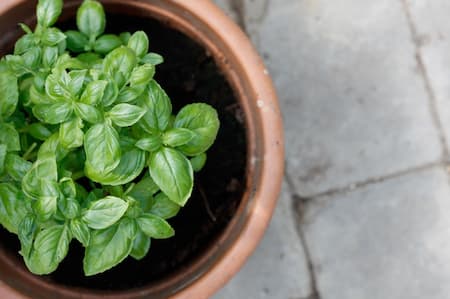
The scientific name for basil is Ocimum basilicum. The most common basil that you will find in the grocery store is called sweet basil or Genovese basil.
Basil is an annual herb. This means that it completes its entire life cycle in one growing season and then the plant dies. To put that into perspective, if you plant basil seeds in the Spring, they will germinate, grow into plants, produce seeds and die before the Winter rolls around.
Basil is also a member of the mint family. It is described as having a minty and peppery flavor, and is considered a mild herb with a sweet taste.
Basil leaves are usually green, shiny and oval shaped.
Both fresh basil and dried basil are used in cooking things such as sauces, meat, fish and vegetables.
Basil is an herb that originated in Southeast Asia. It is believed that it is actually from India. It grows best in warm, tropical climates. However, basil is successfully grown in colder climates during the hot Summer months.
There are different varieties of basil such as thai basil, lemon basil and holy basil.
Basil is a common ingredient used in many dishes in Southern Europe including Italy, Spain, France and Portugal.
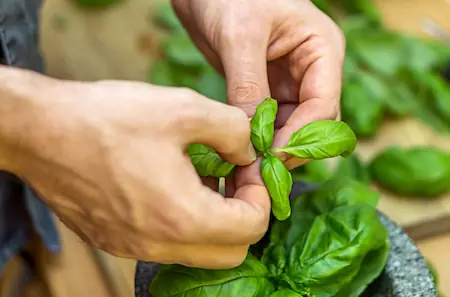
How to Grow Basil
Plant your basil seeds in well-drained soil, and add some compost.
Basil does well when it’s in the sun for 6-8 hours per day.
Water the soil when it feels dry. Your best bet is to water your basil at the base without getting the leaves wet.
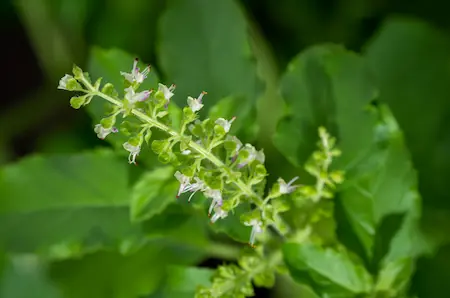
As the plant grows you will notice white flowers growing at the top. Pinch the flowers off so the energy from the plant will be directed toward the leaves.
Basil does very well as a potted plant or when planted directly in the garden.
The best part of growing your own basil is being able to pinch off a few leaves whenever you need to make a sauce or a salad.
How to Dry Basil
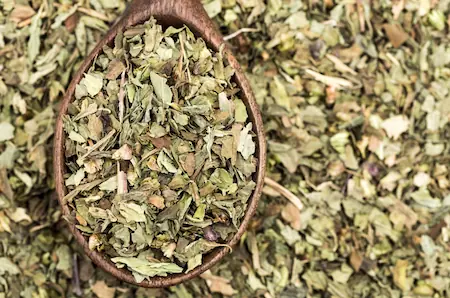
If you decide to grow your own basil, chances are that you’ll end up harvesting much more than you can use. The best way to reduce waste from the garden is to make your own dry herbs.
Get a large sheet pan and spread your fresh basil out. Preheat the oven to 170 degrees and place the tray in the oven for about an hour. You’ll know it’s done when the fresh bright green leaves turn a brownish green and become crispy.
Take the dried basil leaves, crunch them up into little pieces and store them in a plastic bag or mason jar. Keep them in the pantry or cabinet until you need to use them.
Basil Pro Tip
Here is a great tip on how to get fresh basil to last longer. It’s so easy and will extend the life of your basil for at least a week.
- First, take a bunch of fresh basil that is still on the stems.
- Then cut about ¼ inch off of the bottom of the basil stems.
- Place the bunch of basil in a jar or vase and fill it with water.
- Cover the jar and the bunch of basil with a clear plastic bag.
Leave it at room temperature on the kitchen counter or near a window.
When you need some basil leaves, lift up the plastic bag, pinch off the leaves you need and put the bag back over the basil.
That’s it!
About Oregano
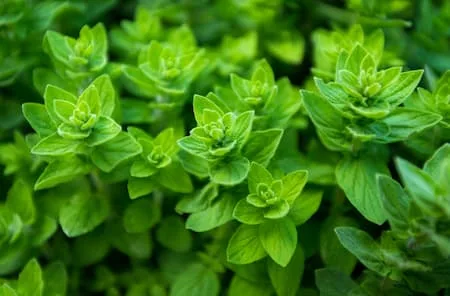
The scientific name for oregano is Origanum vulgare. It is also known as wild marjoram.
Oregano is a perennial herb and it is also a member of the mint family.
Oregano leaves are usually green and round or oval. The oregano flowers are colorful and showy and normally bloom between July and October.
Oregano is described as having an earthy and pungent flavor. When comparing fresh oregano to the dried version, fresh has a more concentrated flavor while dried oregano is more subtle.
Oregano originates from the Mediterranean region of the world. It’s a popular ingredient in many dishes from Southern Europe and North Africa.
One of the best substitutes for oregano is marjoram.
Not only is oregano useful when adding flavor to food, but oregano also has many health benefits.

How to Grow Oregano
Oregano grows best in well-drained soil. Sandy soil is actually good for growing oregano. The richer the soil, the less pungent the oregano will taste.
Oregano plants should be spaced approximately 8-10 inches apart.
Planting oregano in the early Spring is best. The plants will bloom in the Summer.
Oregano plants do well when they receive about 6 hours of sunlight per day.
How to Dry Oregano
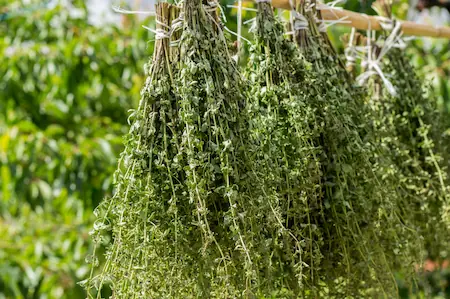
If you are a gardener and end up growing more oregano than you can use, don’t let it go to waste. The best way to preserve your oregano is to harvest it and dry it.
Drying oregano is pretty easy. You’ll be very happy when you have a lot of oregano to cook with all winter long.
The drying process for oregano is simple. You can tie it up in bundles and hang it upside down in a dry place until it’s completely dried out. This requires long periods of time and the oregano will be completely dried out in 6-8 weeks.
If you don’t have the space or time to let it air dry, you can do it in the oven. Spread your fresh oregano springs on a sheet pan and put them in a 170-degree oven for about one hour.
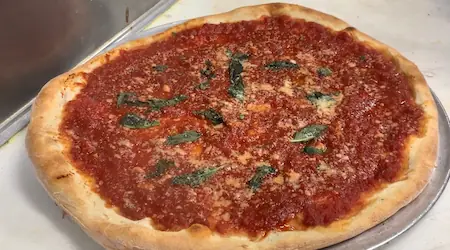
How to Use Basil
There are so many ways to use basil in the kitchen. I’m going to focus mainly on Italian cooking in this article and give some examples of how I use basil.
First of all, put fresh basil on a pizza!
I also like adding fresh leaves of basil to pasta sauces like Marinara, Bolognese, arrabbiata and cacciatore. Although fresh basil is a better choice when making tomato sauces, if you don’t have the fresh version of basil on hand, dried basil is an easy substitute.
I use dry basil in my homemade Italian seasoning blend, salad dressings, and marinades. I also recommend rubbing the dried basil between your fingers before adding it to your recipe. This will release the natural oils and bring out more flavor and aroma.
Let’s not forget about pesto. Everyone loves a good pesto Genovese with lots of fresh basil, garlic, olive oil, grated parmesan and pine nuts.
If you are cooking for someone with a nut allergy you can make a pistou. This is a basil sauce used in French cuisine which is basically basil pesto without the nuts.
How to Use Oregano
Oregano is an ingredient that you’ll find in many Italian recipes and Mediterranean dishes.
One of my favorite ways to use oregano is on a Pizza Marinara. You make a simple pizza with tomatoes, garlic and olive oil. Then you sprinkle on a good quality dried oregano right before you serve it. The strong flavor and smell of the oregano makes this simple pizza something very special.
I love making vinaigrettes with dried oregano leaves. I make them in large quantities and use them as salad dressings and marinades for grilled meats and vegetables.
I also add dried oregano to olive oil with Calabrian chili peppers and garlic. The oregano taste permeates the olive oil and makes a great condiment for dipping bread and raw vegetables.

